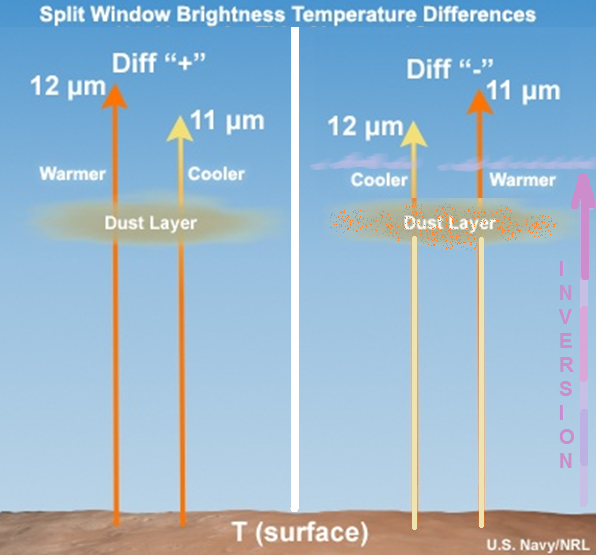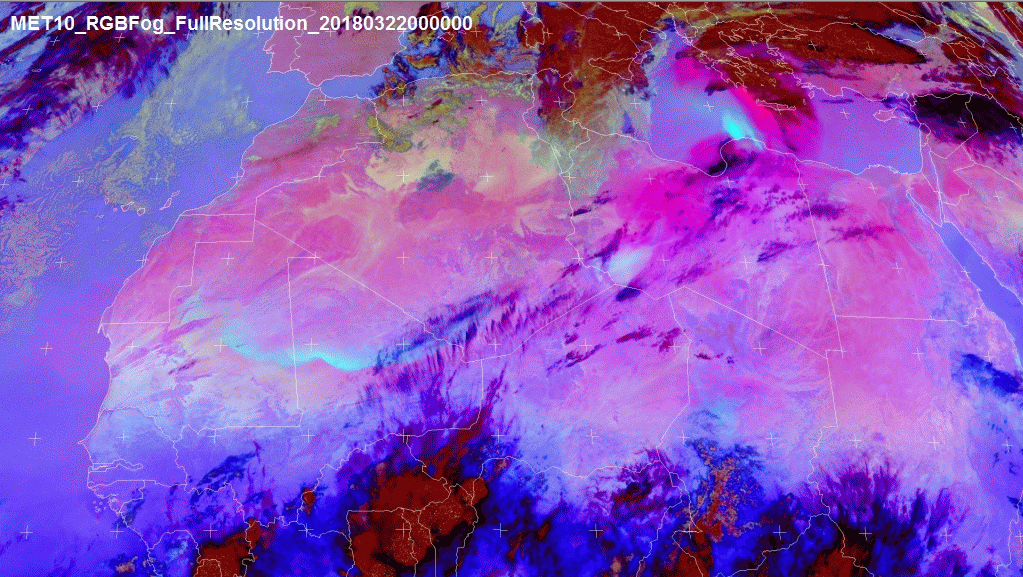Warm dust clouds
Warm, thin dust (sand) clouds over cold surfaces depict in cyan in the Night Microphysics RGB images.
Warm sand is blown in low-levels from Libyan desert by strong winds over the cold Mediterranean Sea (left image).
This colour is rare for thin dust clouds because they usually appear in pink tones. In the left image, one can see higher level dust clouds in pink and low-level dust clouds in cyan colour. The thin low-level dust cloud is cyan instead of pinkish because of the strong temperature inversion.
Under 'normal' conditions, i.e. warm surface and colder dust cloud, the BT difference (IR12.0 - IR10.8) of the red colour beam would be positive and dominate the colour of the dust cloud. But due to the temperature inversion (cold sea and warm dust) and the relatively thin dust cloud, the red component is negative (~ -3 K) hence contributing only negligibly to the colour of the dust cloud. If the dust cloud were thicker, the difference would be around 0 K and contribute more to the red colour beam.

The surface is warmer than the dust cloud ----------- The surface is colder than the dust cloud
The green colour beam (IR10.8 - IR3.9) is strongly contributing (stronger than for thick dust clouds) because thin dust clouds are more transparent at IR3.9 than at IR10.8. In case of an inversion (dust cloud warmer than surface) this leads to large positive BTD (IR10.8 – IR3.9).
The same effect can be observed during night when dust is transported over a cold desert (see the animation below). During daytime, when solar component is added and the temperature inversion disappears, the colour changes drastically as can be seen at the end of the loop.

Night Microphysics RGB from 22 March 2018, 00:00 UTC
Explanation of the cyan colour of warm low-level thin dust clouds in strong temperature inversion in the Night Microphysics RGB (see the recipe):
• Dust clouds usually contribute with a strong red signal in the Night Microphysics RGB (as dust clouds are more transparent in IR12.0 than in IR10.8 channel, see the above graphic). In case of a strong temperature inversion near the ground and a thin low level dust cloud, the red signal is almost missing. Therefore the dust cloud becomes cyan (green + blue).

